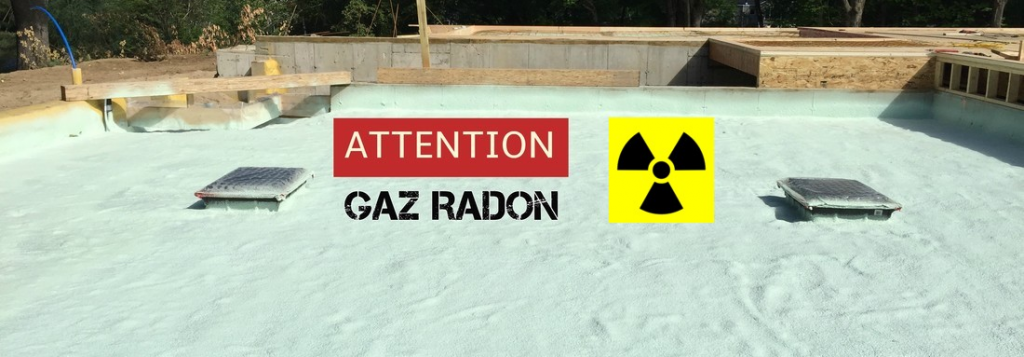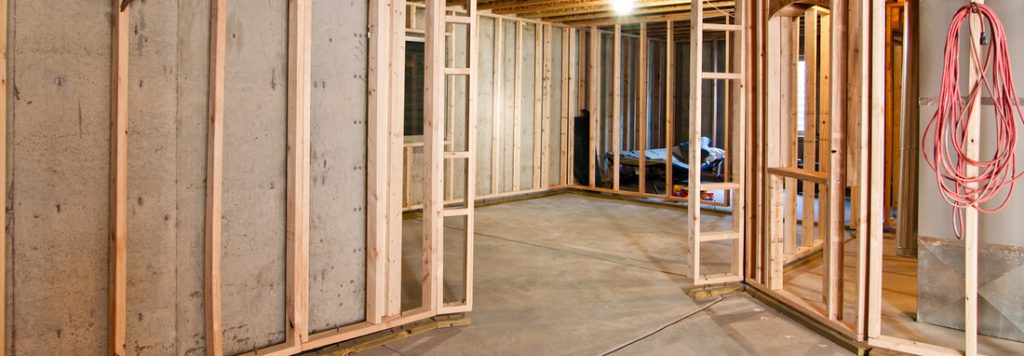RADON: A HIGHLY HARMFUL UNDERGROUND GAS
A radioactive gas of natural origin responsible for many lung cancers, radon is a silent killer (because it’s odourless and colourless) making its way through cracks in foundation walls and floors, also finding its way through openings around pipes and cables. Once inside your home, radon will tend to accumulate in the lower parts of the residence such as the basement or the crawl space, which are the places closest to the source and the least ventilated.
Although certain building materials are known to release weak radon fumes (notably slate, granite, marble, ceramics and porcelain), it has been clearly established since the 1980s that radon concentrations in Quebec and in Canada are not related to house types or materials, but rather to the site’s geography and geology, which obviously varies from region to region.
THE RADON DETECTION TEST
The only way to determine the level of radon in your home is to perform a screening test. You can, for a fee of about $40, get a reliable dosimeter (radon measuring instrument). You also have the option of hiring a certified professional who will carry out a long-term measurement for a minimum of three months.
Remember that exposure to high levels of radon in the indoor air of your home leads to an increased risk of developing lung cancer.
YOU’RE BUILDING A NEW HOUSE? HERE ARE 6 STEPS TO ACHIEVING A RADON-PROOF BASEMENT.
1- Install a 4-inch diameter perforated pipe in the gravel for under-slab depressurization. This pipe must be installed in ¾ inch net gravel and join the centre of the slab’s surface. It must be connected to an exhaust fan if, once the work is completed, a second test notes a radon concentration level greater than 200 becquerels.
2- Use sprayed urethane on the gravel under the slab. Type II sprayed urethane resists radon gas and performs 4 times better than 6 mil polyethylene sheet. The minimum thickness to apply is 1 ½ inch in order to meet the insulation, vapour barrier and continuous air barrier requirements of the Quebec Building Code.
3- Seal the joint between the foundation wall and the slab. Type II sprayed urethane ensures perfect continuity by sealing the foundation wall with the slab without any insulation joints. The product moulds perfectly to the building and doesn’t require any sealant, tape or anything else that could cause compatibility issues between materials.

4- Seal all the holes in the slab, the foundation wall, and all the posts and load-bearing walls as well as the stairway. Sealing openings and columns with sprayed urethane leaves no room for error. The product sticks and swells 30 times its initial volume in 5 seconds.
5- Install gas-proof floor drains. Since radon can use water as an infiltration vehicle, it’s essential to use floor drains specifically designed to prevent soil gases infiltration.
6- Install a watertight cover on sumps. Sumps can communicate directly with the gravel. Make sure to use airtight lids designed for this purpose.
Once your basement or crawl space has been sealed, make sure to measure the radon concentration in order to verify the effectiveness of the system!
This article was originally published on July 1, 2022 by Marcel Lapierre







